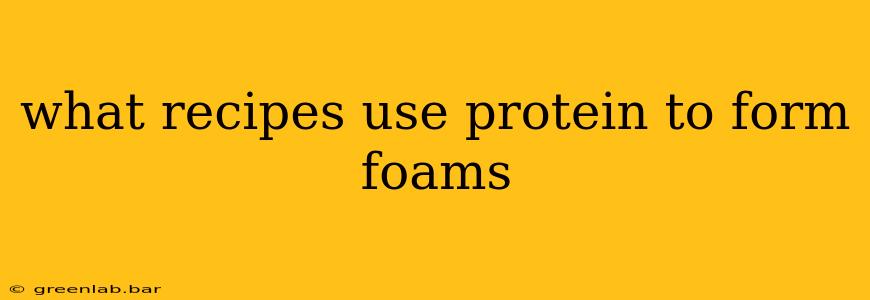Protein foams are the culinary magic behind many light and airy dishes, from delicate souffles to stable meringues. Understanding how proteins create these foams unlocks a world of culinary possibilities. This article delves into the science behind protein foams and explores various recipes that utilize this fascinating technique.
The Science of Protein Foams: Denaturation and Stabilization
The ability of proteins to create foams relies on their unique structure and behavior. Proteins are long chains of amino acids, folded into complex three-dimensional shapes. When subjected to whipping or agitation, these proteins unfold (denature), exposing hydrophobic (water-repelling) and hydrophilic (water-attracting) regions.
The hydrophobic regions interact with air bubbles, creating a film around them. The hydrophilic regions interact with the surrounding liquid, stabilizing the bubble structure and preventing the foam from collapsing. The key factors influencing foam stability include:
-
Protein type and concentration: Different proteins have varying foaming capabilities. Egg whites, with their high concentration of ovalbumin, are exceptional foam formers. Other proteins, such as those found in dairy or legumes, also contribute to foam formation, although often requiring additional stabilizers.
-
pH: The pH of the mixture significantly affects protein denaturation and foam stability. A slightly acidic environment often optimizes foam formation.
-
Temperature: Heat can both denature proteins and affect the viscosity of the liquid, influencing foam stability. Many recipes carefully manage temperature to achieve the desired foam structure.
-
Fat content: Fats can interfere with foam formation by disrupting the protein film around air bubbles. Therefore, many recipes emphasizing protein foams require low-fat ingredients.
-
Sugar and other stabilizers: Sugar helps stabilize protein foams by increasing viscosity and reducing the surface tension of the liquid, preventing bubble collapse.
Recipes Utilizing Protein Foams:
Here are some examples of recipes that expertly leverage protein foams for their texture and structure:
1. Classic Meringues:
Meringues are a quintessential example of protein foam. Egg whites are whipped with sugar to create a stiff, glossy foam that can be baked into delicate cookies or used as a topping. The sugar contributes significantly to the stability of the meringue. Variations include French meringues (egg whites and sugar), Swiss meringues (egg whites and sugar cooked together), and Italian meringues (egg whites whipped with a hot sugar syrup).
2. Soufflés:
Soufflés, both sweet and savory, rely on a delicate protein foam for their signature light and airy texture. Egg yolks and egg whites are often separated, with the egg whites whipped into a stiff foam before being gently folded into the rest of the batter. The careful folding is crucial to maintaining the foam's delicate structure.
3. Angel Food Cake:
Angel food cake is another example of a baked good that relies on whipped egg whites for its lightness and airy texture. Cream of tartar is often added to the egg whites to stabilize the foam. The batter must be handled gently to avoid collapsing the foam.
4. Mousses:
Many mousses, whether chocolate, fruit, or other flavors, utilize whipped egg whites or cream to create a light and airy texture. Often, stabilizers like gelatin are used to create a more stable foam.
5. Pavlovas:
Pavlovas are meringue-based desserts featuring a crispy meringue base and a soft interior, often topped with whipped cream and fruit. The egg whites, whipped with sugar, create a stable, yet slightly yielding, foam that forms the base of this dessert.
6. Whipped Cream:
While not exclusively a protein foam, whipped cream relies on the proteins in the cream to create a stable foam. The fat content in cream contributes to the foam’s texture and stability.
Conclusion:
Protein foams are a versatile technique for creating a wide range of light and airy textures in culinary creations. Understanding the science behind protein foam formation and applying it skillfully is key to achieving consistently successful results. From the delicate fluffiness of a soufflé to the crispy exterior of a meringue, mastering this technique opens doors to exciting culinary adventures. Remember to always prioritize fresh, high-quality ingredients for optimal results.

